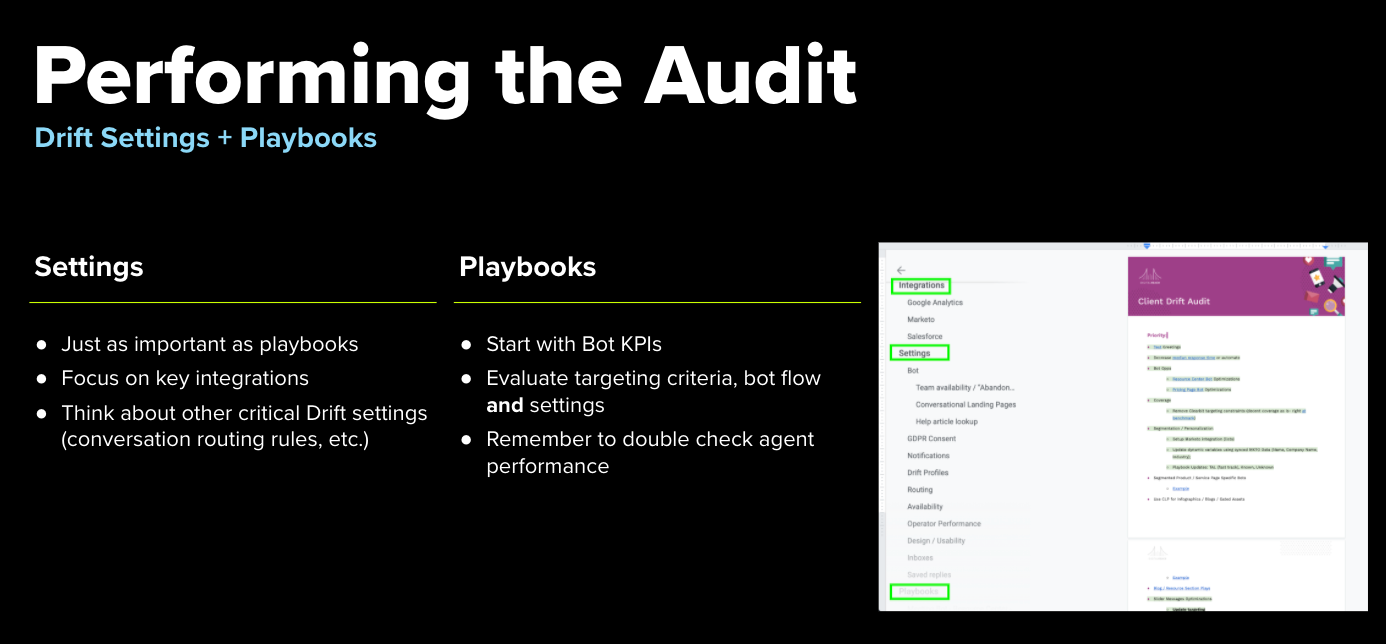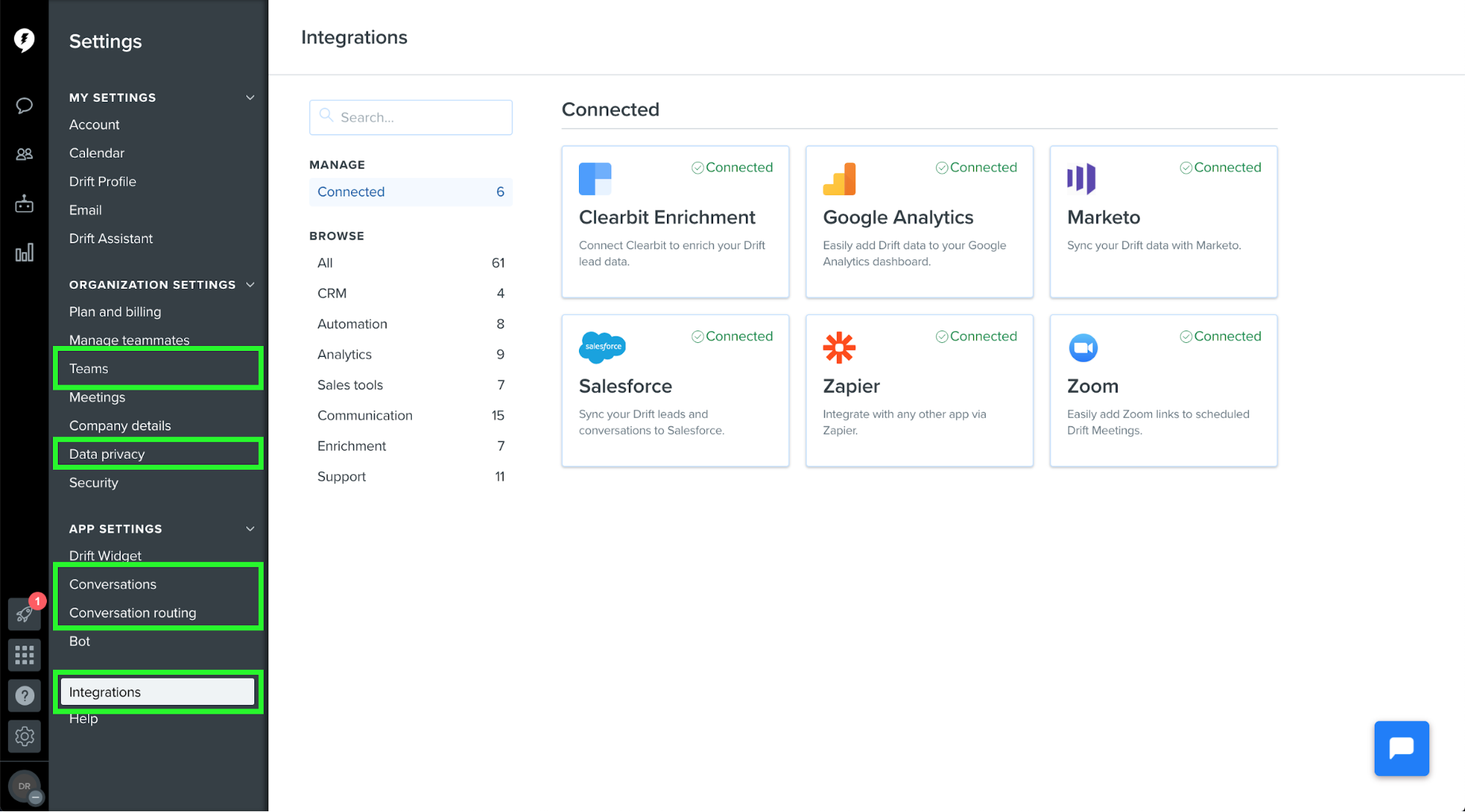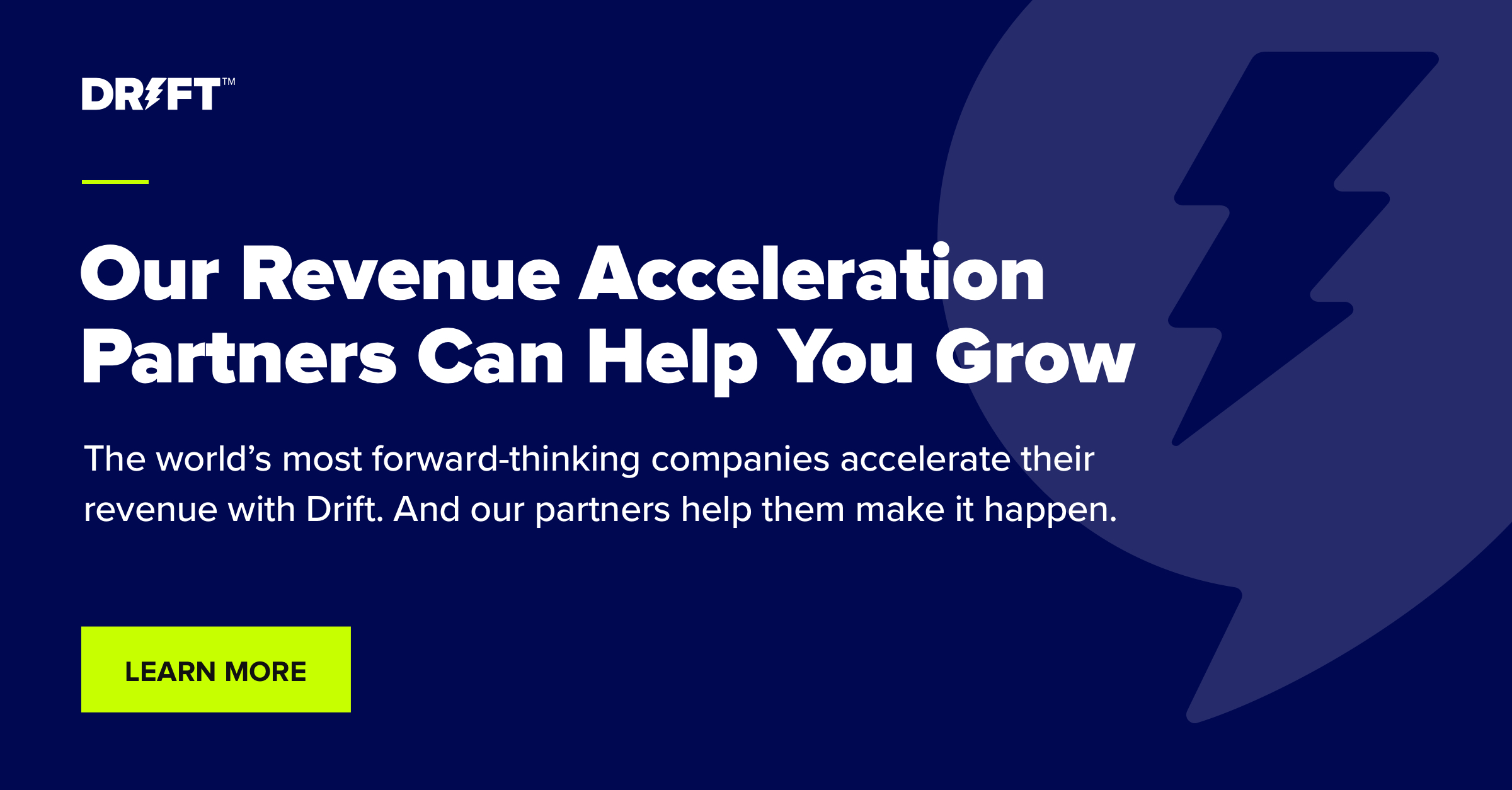Hey everyone, Nick here with the second installment of our new series where I interview Drift’s Solutions Partners on how they’re helping Drift customers be even more successful with Drift and accelerate revenue for their business. Last time around, I chatted with LeadMD’s Andrea Lechner-Becker – catch that interview right here.
This month I caught up with Kris Borja, and I talked to him about how his agency, Digital Reach, uses Drift portal audits to help customers spot areas where they could be improving in their practice of Conversational Marketing and Sales, and thus their ROI from Drift. It also doesn’t hurt that offering this portal to select customers for free has also been a great sales tactic for their agency and helped turn many Drift customers into Digital Reach clients as well. Kris and his team have learned a lot from honing their Drift portal audit process in the past year, so much so that it has become the basis of how they begin every Drift client relationship.
I met with Kris to find out how, in just a few short months after auditing a customer’s portal, they’ve been able to take a Drift implementation from having low engagement to having a direct and accelerated upside impact on meetings, pipeline, and ultimately, revenue. In this interview, Kris shares how it all works so that you can learn from their experience (and also get to know a potential partner in your own organization’s revenue acceleration efforts).
Editor’s note: The following has been edited and condensed for clarity.
Nick Salvatoriello: Can you tell us a bit about who you are and what the folks at Digital Reach do for Drift customers?
Kris Borja: My name is Kris Borja, I’m the Conversational Marketing Practice Leader here at Digital Reach, a Drift Solutions Partner. We are a B2B-focused agency, servicing primarily clients in the SaaS and manufacturing verticals. I’ve been here for about three years—and I’ve worn many hats—handling everything from SEO to conversion rate optimization, and even marketing automation. For about the last year and a half, I’ve been hyper-focused on the Drift side, doing bot optimization and build-outs. One of the biggest initiatives I took on in the last 12 months was developing a unique Drift audit process for our sales team to offer potential Drift clients. This process has opened the door to working with a lot of great Drift customers, which we’ve been able to help tremendously to improve their ROI with the platform.
Nick: Now, first things first. What exactly is a Drift portal audit?
Kris: It’s a process of working closely with a Drift customer and their CSM, reviewing some crucial parts of their Drift implementation, packaging up game-changing insights, and presenting it to the customer. We do all of this in a way that, ultimately, inspires the customer to make a renewed investment in their use of Drift so that they do better than they were before.
Nick: That’s awesome. So what do you look at and look for when performing an audit of a Drift customer’s portal?
Kris: For us, performing a true Drift portal audit means taking a look at two main components: the bot playbooks and the Drift settings. They are the main components of our Drift audit.

We like to compile our findings into an organized, shareable document and include concrete recommendations surrounding how the customer’s team can use their instance of Drift to achieve their goals. We then present these insights and recommendations, for Drift settings and bot playbooks, to the customer and show them how we can help implement them with their team.
Nick: Looking at a customer’s Drift settings is really that important?
Kris: Definitely. We actually spend just as much time digging around in the settings panel as we do in bot playbooks. We do this because the settings area is where you configure several key integrations which, as I’m sure many customers reading this are aware, can really make or break an implementation.
Nick: What should people be checking for in their Drift settings?
Kris: Drift settings can tell you what key systems are or are not connected to Drift. If they are connected, settings will tell you if they are configured correctly, given what the customer is trying to do. The key Drift integrations that we evaluate are:
- Google Analytics
- Salesforce (CRM)
- Marketing automation platform (MAP) integrations

In an ideal world, a client pays very close attention to these integrations, but this often is not the case. We encourage all customers to audit these integrations or to have someone experienced with Drift do it for them because we find there’s often a lot of stuff people lose track of as time goes on.
For instance, in Marketo, field mappings (as well as program and campaign membership mappings) are very important. Without correct mappings, clients can’t accurately report on bot playbooks because that data may not be flowing through to their CRM. That’s also why auditing the Salesforce integration is super important. These integrations need to be set up correctly to work in harmony so that a customer can properly report on activity, opportunities, and revenue.
Nick: What about the Drift bot playbooks? What are you auditing for there?
Kris: No matter how many bot playbooks we’re auditing, the key things to consider are:
- Targeting criteria. What does each bot’s targeting criteria look like? Who set it up and how long has it been running?
- Site coverage. Are there bots showing up on the homepage? Bots on the Contact Us page?
- Conversion optimization. Are there Drift bot playbooks set up yet to boost the performance of any paid media landing pages?
- Personalization. Are there personalization features being utilized in playbooks based on things like ABM-targeting or behavioral data, like what blog pages a visitor is reading?
This context is very important to keep in mind because it will ultimately inform the goal of the bots that are being optimized today and the ones they want to create in the future.
Nick: Impressive stuff. I’m sure you uncover a lot of ways customers could improve the way they run automated playbooks through those questions. But what about the live chat users (most often your sales reps) who might be engaging with prospects using Drift? What do you audit around how that part is working?
Kris: You’re right, that’s a hugely important part of a customer’s Drift usage to look at. After taking a look at the customer’s Drift settings and bot playbooks, we make sure to really evaluate the human component of the Drift platform. These are the chat users, whether or not they’re engaged, and/or if any of them can improve on their key metrics in terms of responsiveness. We look for things like:
- How many chat reps and seats does the client currently have?
- Which of those are currently active and in which bot playbooks?
- Are the active reps taking too long to respond to chats?
- What about the inactive reps? Do they need to be re-engaged in a broader conversation with sales and BDR managers?
Live chat performance will tell you a lot about how well the humans behind a customer’s sales and marketing machine are doing at leveraging this amazing revenue acceleration platform (or not).
Nick: This is fantastic that you look at each of these areas and pull it all together for a customer (before you charge them anything). How long does putting together a Drift portal audit like this take?
Kris: Depending on the maturity of a customer’s Drift implementation, we spend anywhere from two to four hours on the initial audit and the same amount of time on assembling a presentation with our findings and recommendations. As you mentioned, our audits are performed “in good faith,” meaning we do not expect remuneration for completing them. We do audits to show value and to frame a conversation around goals and our working together.
Nick: How do you extend the conversation around what you’re finding in Drift to how you can help customers improve the performance of all their channels and tech stack that Drift works with?
Kris: I love this question because the amazing part about Drift is it’s so much more than just a chatbot for your top-level domain! We bring this up in our audit conversations with customers. We ask them:
- Are you running paid media initiatives? We use Semrush and you can look at their digital footprints. We often recommend Drift as a conversion assist on their paid media landing pages.
- Are you using Marketo? In which case we tout the power of smart segments, Marketo cookies, and Drift to dynamically deploy highly targeted experiences to different segments of their marketing database.
- Are you running webinars or virtual events? If so, we talk about how can Drift support pre-, during, and post-event efforts.
I think you get the point. Through this audit, we are helping customers see our agency and Drift as an omnichannel conversion and nurture solution. By doing this, we have been expanding into additional services, for more and more Drift customers, like paid media, marketing automation, account-based marketing, and design management. As a note, two of the last three Drift accounts that we audited just hired us to run some large paid media and ABM engagements.
Nick: Can you tell us about one of your recent client wins using this approach?
Kris: Sure thing. I’d love to tell you about a client in the manufacturing industry. This may not be an industry you think is doing really innovative things with digital customer experiences. But with our help, this client is becoming the exception.
We started working with them about six months ago. This customer had a small sales team, who had been more preoccupied with prospecting tactics other than engaging visitors to their website. Their company brought on Drift because they saw the potential of Conversational Marketing, but their marketing team wasn’t resourced to build out Drift to its potential. The CMO viewed the engagement with Digital Reach as an extension to his team, giving them an opportunity to parallel path develop this channel alongside other priorities underway with the team.
The customer’s CSM at Drift reached out to us after hearing about our Drift portal audit and how we used it to make performance-improving optimizations. They connected us with the customer, the customer allowed us to do the audit, and they liked what they saw. Ultimately, they hired us for an initial engagement to make some of the improvements we were recommending. I’m happy to say that, after helping them make optimizations in the following months, their Drift bot playbooks went on to generate 3x the number of chat influenced opps over four months, hooking their sales team up with a healthy influx of qualified meetings.
So you can see that, with the application of a little insight and a lot of follow-through, what had been a limited implementation has turned into a renewed confidence in and optimism for Conversational Marketing. Not only that, but we’ve been able to position Drift as an indispensable tool in their full-cycle revenue operations tech stack. The results generated buy-in and excitement across varying levels within the company, from marketing and their head of operations to key stakeholders across sales leadership, sales ops, and even the C-suite.
Nick: Wow, that’s quite a turnaround (for the customer, for Drift, and for your agency).
Kris: It is! And I’d like to stress that we’ve been able to achieve all of this by using automated bot playbooks in Drift, requiring zero BDR involvement from this customer (our now client). That was important because they’re only just now hiring an inbound sales team that will be tweaking their Drift playbooks to handle online and offline capabilities, live chat, and things like that.
Nick: That’s a great story. So, where is Digital Reach going from here with your learnings from doing all these Drift portal audits over the past year?
Kris: We’ve received a lot of great feedback, from prospects and internal Drift stakeholders alike, on this approach. We’re planning to templatize and scale our audit process so we can offer it to even more customers. We’re currently on track to double the size of our Conversational Marketing team to keep up with the demand we’re experiencing. Because it’s been so effective at building relationships, establishing credibility, and minimizing the perceived risk of hiring us, we plan to continue using Drift portal audits so we can serve more Drift customers.
Nick: This is exciting! If anyone in our ecosystem would like to learn more about what you do at Digital Reach and to communicate with you folks, where’s the best place for them to go?
Kris: If you have any questions about our approach or working with us, feel free to ping me. I’m often manning our own Drift chat on digitalreachagency.com or reach out to me on LinkedIn. I would be happy to answer any questions!
Nick: There you go. Kris Borja, thank you so much for sharing this story with us. We really appreciate it.
Kris: My pleasure!









